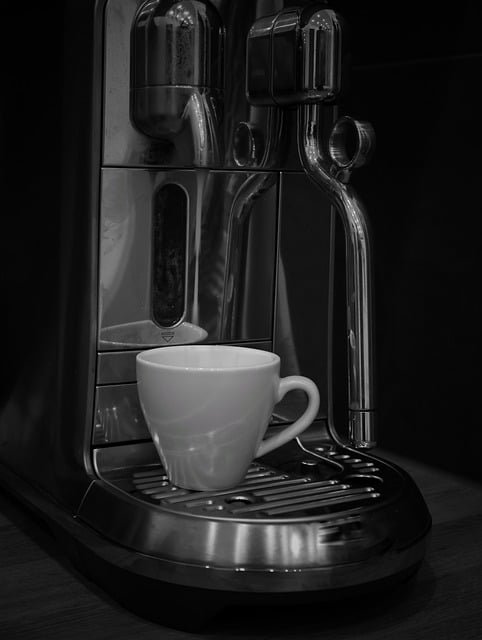Keurig Coffee Pods (K-Cups): Quick Guide to Types, Use, Storage, Recycling, and Brewing Tips
Keurig coffee pods have revolutionized home brewing by offering convenience and variety in a single-serve format. These small plastic cups contain pre-measured coffee grounds sealed with foil, designed to work with Keurig brewing systems. Understanding the different pod formats, proper usage techniques, storage methods, and environmental considerations helps maximize your coffee experience while making informed choices about this popular brewing method.

Keurig coffee pods, commonly known as K-Cups, represent one of the most significant innovations in home coffee brewing. These single-serve containers have transformed how millions of people prepare their daily coffee, offering unprecedented convenience without sacrificing flavor variety. The system’s popularity stems from its ability to deliver consistent results with minimal effort, making it ideal for busy households, offices, and anyone seeking quick, reliable coffee preparation.
Understanding Keurig Pod Formats and Flavor Options
Keurig pods come in several distinct formats designed for different brewing systems. The original K-Cup format features a plastic cup with a foil lid and paper filter, containing approximately 9-12 grams of coffee. K-Carafe pods offer larger portions for multi-cup brewing, while Vue pods provide a different brewing technology with barcode scanning capabilities. Each format delivers unique extraction characteristics, with some focusing on bold flavors and others emphasizing smooth, balanced profiles.
Roast levels span the complete spectrum from light to dark, with each offering distinct flavor characteristics. Light roasts preserve origin flavors and acidity, medium roasts balance sweetness and body, while dark roasts emphasize bold, smoky notes. Specialty blends include flavored varieties like vanilla, caramel, and seasonal options, plus decaffeinated versions that maintain full flavor profiles through advanced processing methods.
Machine Compatibility and Proper Pod Usage
Most Keurig machines accept standard K-Cup pods, though compatibility varies between model generations. Newer machines often feature universal compatibility, while older models may require specific pod types. The brewing process involves lifting the handle, inserting the pod with the foil side facing up, closing the handle to puncture both top and bottom, selecting your desired cup size, and pressing the brew button.
Safety considerations include ensuring the machine is properly maintained, using only compatible pods to prevent damage, and allowing adequate cooling time between brews. Cup size selection affects strength, with smaller sizes producing more concentrated coffee and larger sizes creating milder brews. Most machines offer 6, 8, 10, and 12-ounce options, allowing customization based on personal preferences.
Storage Guidelines and Freshness Assessment
Proper storage significantly impacts pod quality and longevity. Store pods in cool, dry locations away from direct sunlight, heat sources, and humidity. Original packaging provides optimal protection, but airtight containers work well for opened boxes. Avoid refrigeration or freezing, as temperature fluctuations can compromise the seal and introduce moisture.
Shelf life typically ranges from 8-12 months from the manufacturing date, though properly stored pods often remain usable beyond this timeframe. Freshness indicators include intact foil seals, absence of visible damage or swelling, and strong coffee aroma when the pod is punctured. Expired pods may produce weak, stale-tasting coffee but rarely pose health risks when stored correctly.
Environmental Impact and Recycling Solutions
Keurig has implemented recycling programs in many regions, accepting used pods through mail-back services and partnering with local recycling facilities. The company has also developed recyclable pod versions using polypropylene plastic that can be processed through standard recycling streams after removing the foil lid and emptying grounds.
Reusable pod options provide environmentally conscious alternatives, allowing users to fill their own pods with preferred coffee grounds. These stainless steel or BPA-free plastic alternatives reduce waste while offering complete control over coffee selection and grind size. Many users find reusable pods produce superior flavor due to fresher grounds and customizable strength.
| Pod Type | Manufacturer | Price Range | Key Features |
|---|---|---|---|
| Original K-Cups | Keurig Green Mountain | $0.50-$1.20 per pod | Standard compatibility, wide variety |
| Recyclable K-Cups | Various brands | $0.45-$1.00 per pod | Eco-friendly materials, easy recycling |
| Reusable Pods | Multiple manufacturers | $8-$25 one-time cost | Refillable, customizable, cost-effective |
| Compostable Pods | San Francisco Bay Coffee | $0.60-$0.90 per pod | Biodegradable materials, premium coffee |
Prices, rates, or cost estimates mentioned in this article are based on the latest available information but may change over time. Independent research is advised before making financial decisions.
Brewing Optimization and Troubleshooting Common Issues
Achieving optimal flavor requires attention to several factors beyond pod selection. Water quality significantly impacts taste, with filtered water producing cleaner, more vibrant flavors than tap water with high mineral content. Regular machine descaling prevents mineral buildup that can affect temperature and flow rate, both crucial for proper extraction.
Common brewing problems include weak coffee, often caused by using large cup sizes with single pods or machine maintenance issues. Clogged needles result from coffee ground accumulation and require cleaning with paper clips or specialized tools. Inconsistent brewing temperatures may indicate descaling needs or internal component wear requiring professional service.
For enhanced flavor, consider pre-warming your cup, using the smallest appropriate cup size for stronger coffee, and experimenting with different pod varieties to find preferred flavor profiles. Some users achieve better results by running a blank cycle before brewing to ensure optimal water temperature, particularly with machines that have been idle for extended periods.




